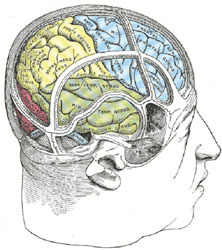Study is breakthrough for dyscalculia sufferers
20 Apr 2007 by Evoluted New Media
Scientists think they have found the area of the brain that goes wrong in people with dyscalculia - a condition that renders them unable to perform arithmetic.
Scientists think they have found the area of the brain that goes wrong in people with dyscalculia – a condition that renders them unable to perform arithmetic. This study is the first demonstration that the parietal lobe is the key to understanding developmental dyscalculia. The disorder is just as prevalent in the population as dyslexia and attention deficit hyperactivity disorder – around 5% of the population - however, the underlying brain dysfunction causing dyscalculia is still a mystery.
Dr Roi Cohen Kadosh, of the UCL Institute of Cognitive Neuroscience, who lead the study said: “Most people process numbers very easily – almost automatically – but people with dyscalculia do not. We wanted to find out what would happen when the areas relevant to maths learning in the right parietal lobes were effectively knocked out for several hundred milliseconds. We found that stimulation to this brain region during a maths test radically impacted on the subjects’ reaction time.”
Using transcranial magnetic stimulation (TMS) to stimulate the brain, scientists were able to bring about dyscalculia in normal subjects for a short time while the subjects completed a maths task that involved comparing two digits, one larger in physical size than the other and the other larger numerically. For example, the subjects compared 2 and 4.
The researchers found that non-dyscalculic participants displayed dyscalculic-like behaviour in number processing only during TMS-induced neuronal activity disruptions to the right intraparietal sulcus.
“This provides strong evidence that dyscalculia is caused by malformations in the right parietal lobe and provides sold grounds for further study on the physical abnormalities present in dyscalculics’ brains,” said Dr Kadosh.
The team hope that the findings could lead to better diagnosis and management techniques.




